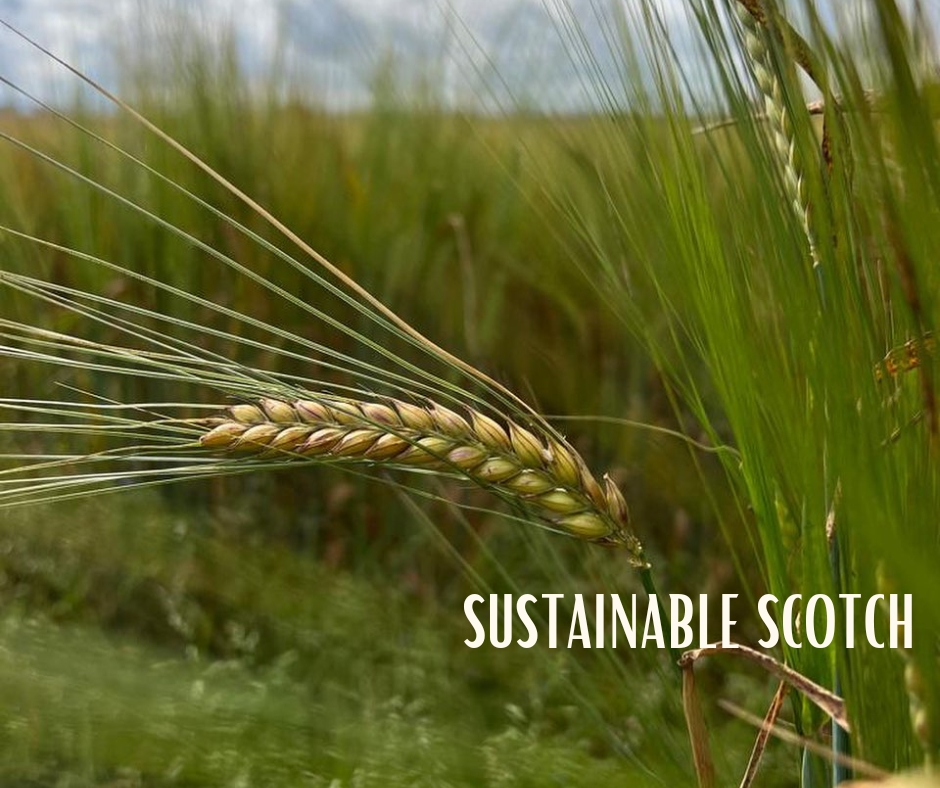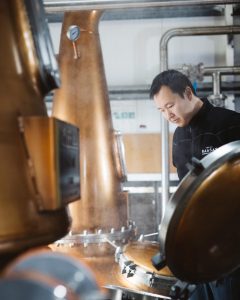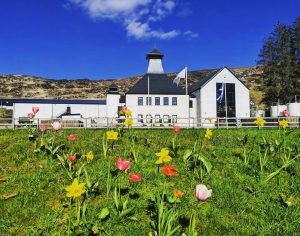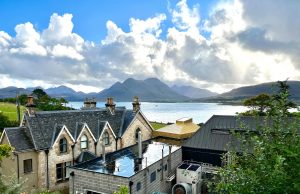Sustainability and Scotch Whisky


Sustainability is becoming increasingly important for the whisky industry. The production process is resource-intensive, with each step having environmental implications, from the barley fields to the water used in distillation. For example, it takes approximately 11 tons of grain to produce one ton of whisky, and water usage is also substantial. Additionally, powering the distillery and transporting the final product consumes significant energy.

I love seeing all the distilleries pushing for better practices. Several have invested in renewable energy sources like wind turbines and solar panels to power their operations. You really can tell the different distilleries that seem to care more about the bigger picture.
Water usage is another area they are making bigger strides. Some have implemented water recycling programs, while others invest in cutting-edge tech to minimize water usage during production. For instance, several distilleries are currently exploring the application of “dry farming” techniques for barley cultivation, which requires much less water than traditional farming methods.
We are seeing more and more products coming through our warehouse are more sustainable packaging. Several brands have found recyclable packaging alternatives. A trend that I have seen popping up is the use of lightweight glass for bottles, which reduces the overall weight and, and in turn the energy required for transportation. Some distilleries are reducing unnecessary packaging and using recycled or sustainably sourced paper for labels and boxes. Many are shooting to eliminate unnecessary plastic packaging and ensure any plastic used is recyclable, reusable, or compostable. These are incredible efforts that is amazing to see on a wider scale!

You are also seeing different brands using their platforms to help raise awareness about these issues. Like the Lagg Distillery on the Isle of Arran hosts clean-up events to keep local beaches and waterways free of litter. It doesn’t always have to be on a grander scale. It’s a lot of little things that add up.
Three great examples of distilleries that are focused on sustainability:
Ardnamurchan Distillery, situated on the picturesque western peninsula of Scotland, is the perfect example of the whisky industry’s turn toward sustainability. Since opening in 2014, the distillery has been powered by local, renewable energy sources. A biomass boiler, fueled by wood chips, provides the heat needed for the distilling process, while a hydroelectric generator supplies electricity for the distillery’s operations. By harnessing local, renewable energy, Ardnamurchan not only minimizes its carbon footprint but also supports the local economy by sourcing wood from local suppliers. There’s a very good reason they are “Scotland’s Greenest Distillery.

Moreover, the distillery has committed to full transparency in its production process. Each bottle of Ardnamurchan whisky is accompanied by a unique code, which you can use to trace the whisky’s complete production journey – from field to bottle. This transparency is part of their commitment to honest and sustainable distillery.

Another distillery worth noting in the pursuit of sustainability is Nc’nean, a Scottish distillery that is pushing the boundaries in eco-friendly whisky production. Located in the remote West Highlands, Nc’nean has been operating on a zero-waste principle since its inception in 2017. The distillery is using 100% renewable energy sources to power its operations and has devised an innovative, organic production process that recycles waste into useful resources. For example, the spent grains from the distillation process are fed to the local cattle, while the left-over liquid is spread on the fields as a natural fertilizer. Their commitment to sustainability extends to its packaging too, opting for lightweight, recycled glass bottles, which reduces both CO2 emissions during transport. This whole approach to production says a lot about the industry’s potential to combine tradition with sustainability.
The Isle of Raasay Distillery in Scotland is another exemplary establishment that has placed sustainability at the heart of its whisky production. Nestled between the Isle of Skye and Scotland’s west coast, they have capitalized on their unique island location to implement environmentally friendly practices. They use locally grown barley for the single malt whisky, thereby cutting down on transportation emissions and promoting local agriculture. The distillery also utilizes a biomass boiler, which significantly reduces its reliance on fossil fuels. They also use lightweight packaging materials and prioritise recycling.

The Scotch whisky industry has been greatly influenced by the growing consumer awareness and demand for sustainable products. With sustainability being on the forefront of a lot of minds, more and more consumers are consciously opting for brands that align with their values. As a result, distilleries that prioritize eco-friendly practices are gaining significant traction. This shift in consumer preference is driving the industry to embrace sustainability as a key element in their production processes. Which is a fantastic thing!
They are all demonstrating that quality and tradition can coexist with environmental stewardship. Of course, there’s still more to be done, but it’s so great to see the efforts these distilleries have already made.
Author: Andrew is an adventurous photographer with a keen eye for detail and a passion for discovering captivating stories. His love of coffee fuels his creative spirit while traveling Scotland in search of the best distilleries. His preference lies with those that prioritise community and sustainability over profit; namely Isle of Raasay, Isles of Harris, Ardnamurchan, and Glenfarclas. He values the importance of relationships between people, places, and products.